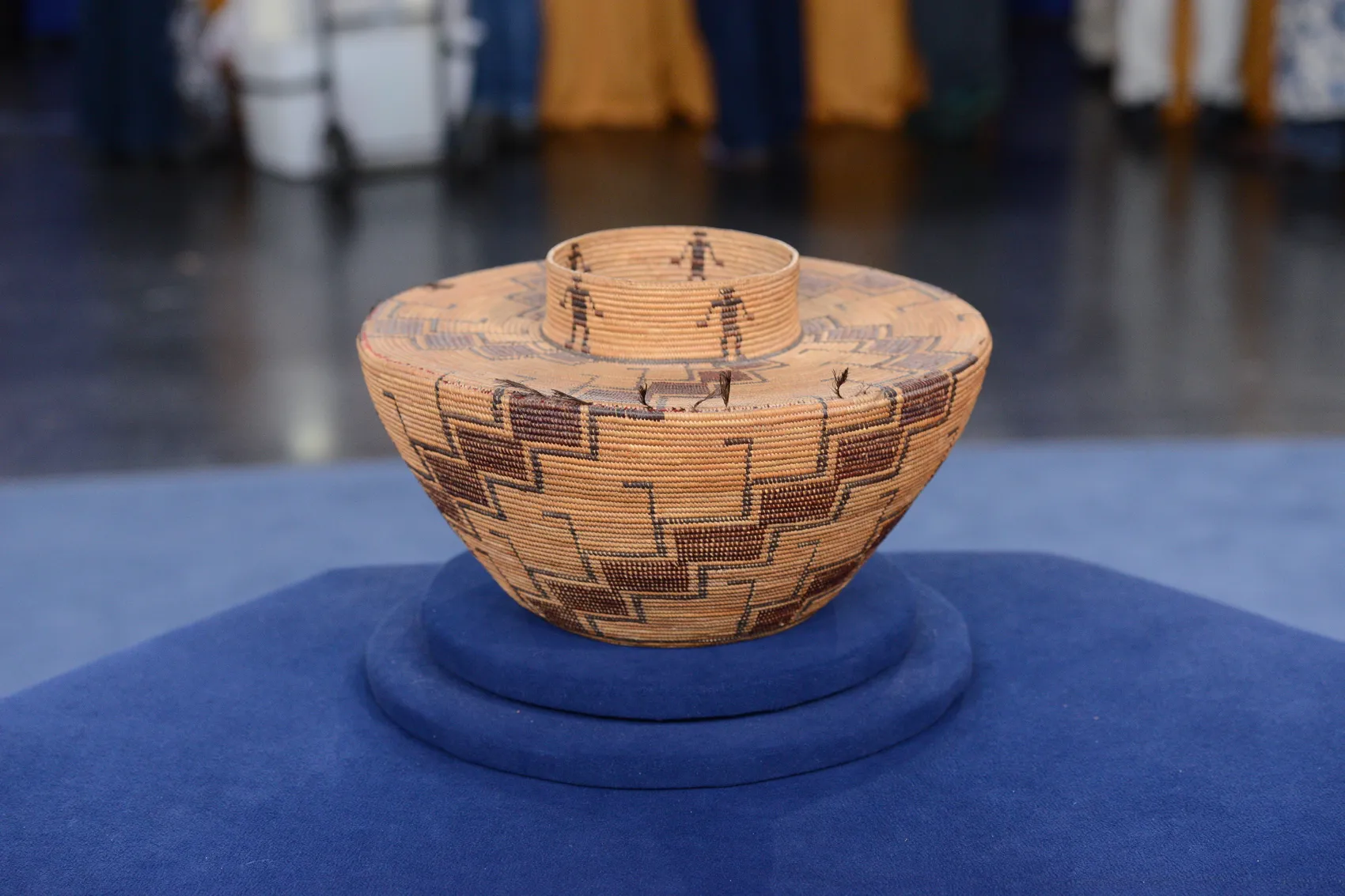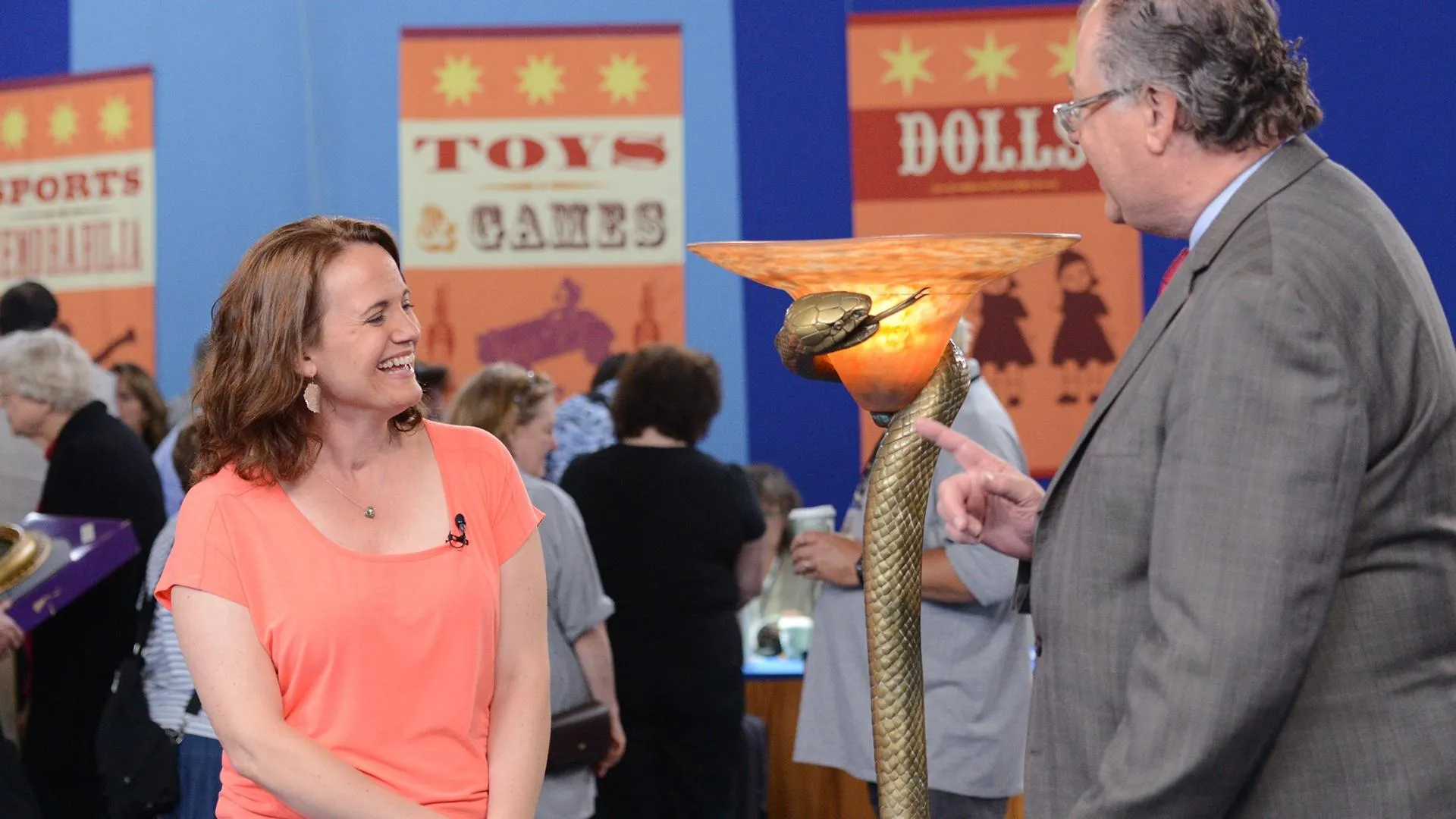GUEST: I bought it at an antiques store on Union Street in San Francisco. I saw a bunch of them in the display window and said, "Oh, they have to be too much," but stopped, and I said, "Wow, I can afford this. It's one week's salary." Oh, my goodness. That was the big sacrifice.
APPRAISER: Wow.
GUEST: I wanted the other ones, but they just... you couldn't do it. And there was a comparable five or six others that were this quality.
APPRAISER: What do you know about this basket?
GUEST: Well, I know it's California, Central Valley. I'm not sure the exact tribe. It might be Yokuts or western Maidu. I'm fuzzy on that. I know it's a bottleneck because of coming in and going up like that.
APPRAISER: Well, your basket definitely is from California, and it is a Yokut, and it is a lovely bottleneck, a nice, flat top with a nice neck. This is called the shoulder right here. And your design makes it Yokut too, which is the diagonal diamondback rattlesnake design. Beautifully woven, stitched going the right way for Yokut. At one time, these baskets were made for rattlesnakes...
GUEST: Ooh!
APPRAISER: and they would do a ceremony where there was actually a rattlesnake in the...
GUEST: Oh, really?
APPRAISER: Oh, yes.
GUEST: I had not heard that.
APPRAISER: But then, when the tourists come along, they love these baskets.
GUEST: Without the snake.
APPRAISER: The basket is probably circa 1900, and during that time, they were making baskets like this for the tourists, and the tourists loved the little figures on them.
GUEST: Oh, okay.
APPRAISER: They could probably sell it for a little bit more at that time because of the figures.
GUEST: Oh, okay.
APPRAISER: Yes. This basket in the early 1900s, I would imagine that the price might have been maybe $100, $150, and that would have been very strong, because a man's salary at that time was probably five dollars a week.
GUEST: Okay.
APPRAISER: It does have some damage. All around the rim, there would have been these little quail top knots from the quail, and then you see a little... oh, nubs of red. That would have been old, old red trade yarn, and that would have been all over.
GUEST: I can see it. I'm sure the moths must have loved it.
APPRAISER: The moths love it. But it is delightful. It's probably around 14 inches, maybe eight or nine inches high. Do you have any idea what this basket is worth?
GUEST: I know it has to be worth $1,000 or $2,000 or something, but I don't know...
APPRAISER: $2,000?
GUEST: I'm just guessing, but I don't know if it's kept going up from my $115 or whether the economy has flattened it.
APPRAISER: When did you get this basket?
GUEST: I believe it was about 1967.
APPRAISER: A retail value of this basket would be somewhere in the vicinity of $24,500.
GUEST: Oh... no, I did not envision that it had gone that much more. I can't do the math in my head.
APPRAISER: That's a lot of working days, isn't it?
GUEST: That's very nice, that's very nice.
APPRAISER: It is a lovely basket. Without the damage on this basket-- which can be replaced, but they can't get the actual old red yarn-- we are talking about a basket that is probably, retail value would be $35,000, maybe more.
GUEST: Wow. That's very nice to hear.
APPRAISER: Well, I thank you for bringing it in.
GUEST: Back on the shelf!









